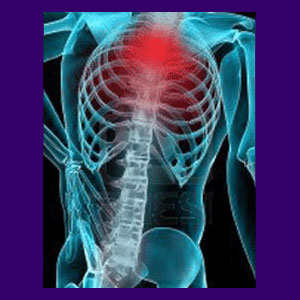
Spinal misalignment describes a less than optimal positioning of the vertebral bones in relation to one another. A single vertebra can be misaligned from the spine or multiple vertebral bones can be out of proper alignment, creating a cascade effect that can influence overall form and function of the entire backbone.
When it comes to the spine, misalignment is certainly a condition that means different things to different people in case-specific contexts. For example, what a chiropractor might call misalignment will most frequently look perfectly normal to a physician. Meanwhile, what a physician might consider misalignment is a completely different matter altogether.
This interesting discussion provides definitions for spinal misalignment from a variety of healthcare backgrounds. We will detail the causes and consequences of vertebral misalignment to gain a comprehensive understanding of the topic as a whole.
What is Spinal Misalignment?
Misalignment describes being out of normal position. When discussing the spine, it is important to know that each vertebral bone moves independently of the bones above and below it to some extent. The range of motion is facilitated by the intervertebral disc in between the vertebrae and regulated by the spinal facet joints and various soft tissues that control spinal movement.
Normally, each vertebra follows a pattern of gentle curvatures in the sagittal view of the spine, while remaining perfectly straight and directly beneath the vertebra above it and below it in the coronal view. Therefore, each vertebral bone has a “proper” place in relation to the bones which surround it.
However, since each bone can move independently, there is the possibility of abnormal movement of a spinal bone causing it to be considered misaligned. This misalignment can occur in a forward (anterior), rearward (posterior) or lateral (side to side) direction or may encompass multiple abnormal directions at once, such as anterior and toward the left side of the body simultaneously.
Causes of Spinal Misalignment
Spinal bones can migrate out of normal alignment due to many causes and circumstances, as detailed below:
Scoliosis describes an atypical lateral movement other spine, involving curvatures in the coronal view. In scoliosis, there will be many spinal misalignments demonstrated, with single zone curvatures featuring the least number of misalignments, and larger curvatures across multiple spinal zones featuring the most misalignments, such as in the case of cervicothoracolumbar curvatures.
Spondylolisthesis describes an atypical forward or rearward migration of one or more vertebral bones. Forward motion is called anterolisthesis, while rearward motion is called retrolisthesis. The amount of atypical slippage will determine the clinical severity of the condition on a grading scale of 1 to 4, with the addition of a grade 5 called spondyloptosis for extreme cases.
Lordotic change involves increases or decreases in the degree of typical spinal curvature demonstrated in the cervical and lumbar regions in the sagittal view. When the degree of lordosis changes, vertebral bones can be considered misaligned from textbook normal placement in the spine.
Kyphotic change involves increase or decreases in the degree of typical curvature demonstrated in the thoracic and sacral spinal regions in the sagittal view. When the degree of kyphosis changes, vertebral bones can also be considered misaligned from textbook normal placement in the spine.
Chiropractic subluxation is the most subjective form of misalignment. Chiropractors mainly treat subluxations, which are tiny variations of a spinal bone from optimal spinal alignment. These small movements are corrected with manipulations called spinal adjustments. Medical doctors do not recognize this diagnosis as being valid and say that human bones do not require such manipulations in order to remain perfectly healthy.
Spinal Misalignment Consequences
When it comes to the effects of spinal misalignment, the causative condition will be the determining factor as to the results. In general, minor atypical movement of a vertebral bone is not an issue and might correct itself with time or some random circumstance. Other conditions will remain atypical, but will not generate pain or related neurological symptoms.
Some misaligned spine conditions have pathological potential, such as in the following scenarios:
Spinal stenosis describes a narrowing of the central vertebral canal due to many possible reasons, including misalignments in the canal due to shifted vertebral bones. Dramatic reduction in the size of the central canal can causes compression of spinal nerves or the spinal cord.
Foraminal stenosis describes a narrowing of the openings through which the spinal nerve roots exit the vertebral column. When the spinal bones shift, these openings can suffer misalignments also, reducing their effective size and possibly impinging on a nerve.
Muscular and ligamentous strain can result from muscles or connective tissues working abnormally hard to maintain a proper range of motion for migrated vertebral bones. RSI is a common diagnosis for persistent muscular strain.
Spinal instability can result from significant vertebral misalignment. Instability can be measured in microinstability affecting parts of the single affected bone or can be measured in macroinstability affecting the entire spinal column. An unstable spine can be a dire diagnosis to receive.
Tissue compression occur in cases where one or more vertebral bones are moved way out of normal position and generally results from large scale atypical movements, such as those seen with hyperkyphosis and severe scoliosis. Tissue compression can affect circulatory vessels, neurological structures, internal organs and other anatomical components, potentially creating disease or injury.





